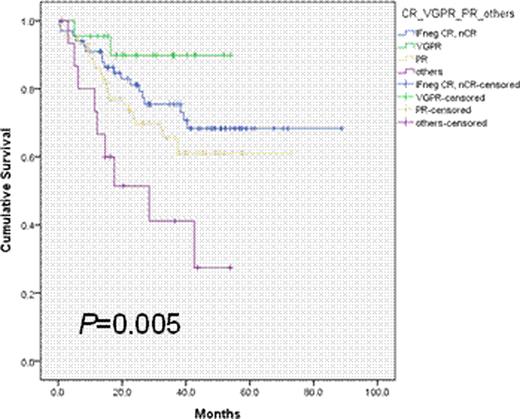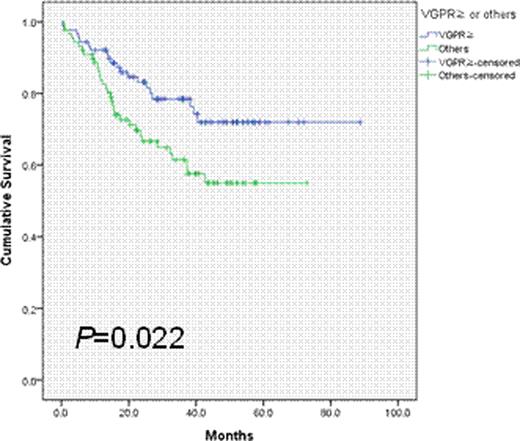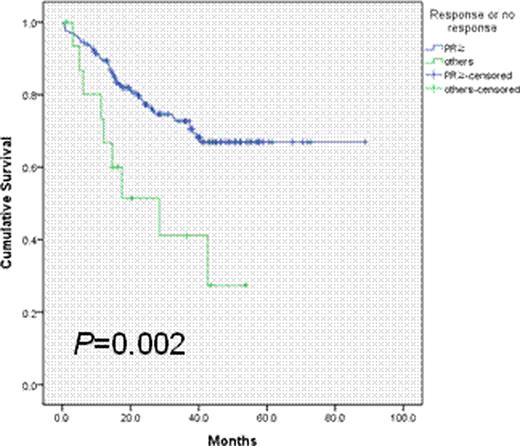Abstract
Abstract 1866
In multiple myeloma (MM), the association between the response to induction before autologous stem cell transplantation (ASCT) and long-term outcome is less clear but the situation may change with the introduction of novel agents. We therefore assessed the clinical relevance of response of bortezomib induction treatment or post-ASCT response for patients who received bortezomib-combined induction chemotherapy followed by ASCT.
We retrospectively assessed 183 MM patients who received bortezomib-containing induction therapy (BTZ-IT) followed by ASCT in 24 institutions throughout Korea between 2003 and 2010. Records of these patients were reviewed using the Korean Myeloma Registry database (www.myeloma.or.kr). Each institution was requested to reconfirm the data using additional case report forms. Patients who had overt MM based on International Myeloma Working Group diagnostic criteria were selected.
One-hundred seventy eight patients were eligible. Their median age was 56 years (range, 28–69 years) and 96 (53.9%) were male. Forty nine (27.5%) received bortezomib as front-line therapy and 129 (72.5%) as second-line treatment. All patients underwent ASCT and 22 (12.4%) were treated with tandem ASCT. Ninety-seven (54.5%) patients were treated with maintenance therapy after ASCT. After BTZ-IT, the response rates in this selected series of patients were 37.6% CR, 12.4% VGPR, 41.0% PR, 7.3% SD and 1.7% PD (Figure 1A, 1B, 1C); the corresponding post-ASCT rates were 69.2% CR, 14.0% VGPR, 11.0% PR, 2.9% SD and 2.9% PD. At a median follow-up of 46.6 months, the 3-year overall survival (OS) and event-free survival (EFS) rates were 70.0% and 31.9%, respectively. Multivariate analysis showed that factors independently predictive of OS and EFS included achievement of BTZ-IT response °Ã PR (P=0.025 and P=0.014, respectively) and the treatment with maintenance therapy (P=0.048 and P=0.001, respectively). Post-ASCT CR vs. °Â VGPR was also an independent prognostic factor for OS and EFS (P=0.0001 and P=0.002, respectively).
Post-ASCT overall survival according to the response to BTZ induction
At least PR to BTZ-IT and CR after ASCT were predictive of survival. These findings suggest that patients who responded to BTZ-IT may benefit from ASCT due to an enhanced quality of response. Maintenance therapy can also affect patient outcomes.
No relevant conflicts of interest to declare.
Author notes
Asterisk with author names denotes non-ASH members.




This feature is available to Subscribers Only
Sign In or Create an Account Close Modal